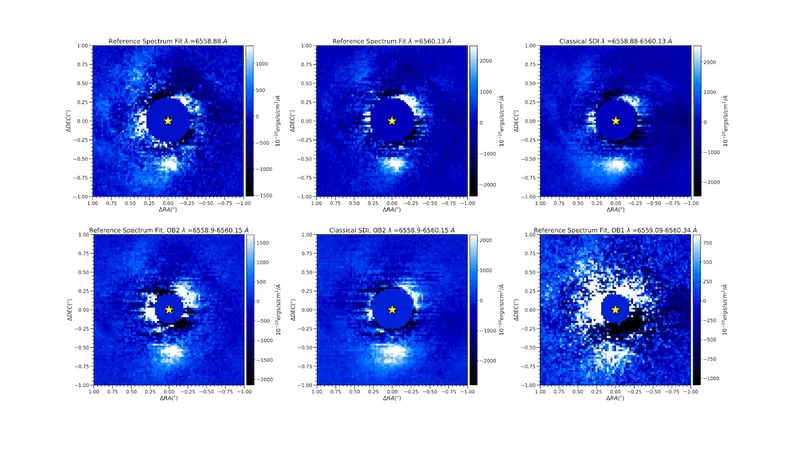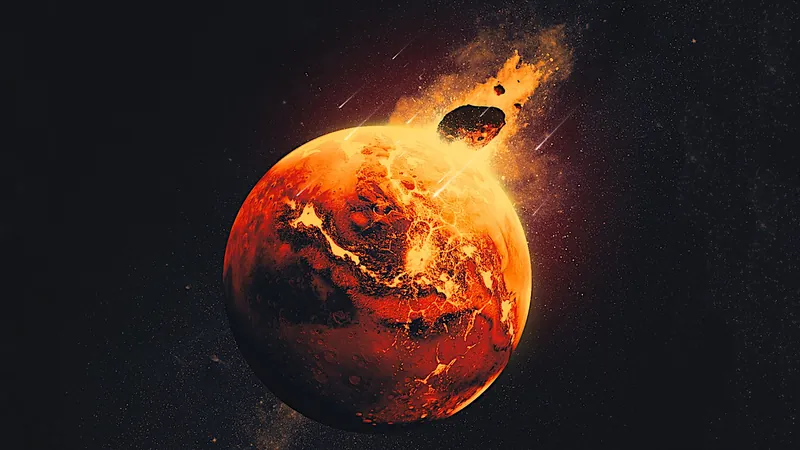
A Revolutionary Discovery: AB Aurigae b Protoplanet Detected with Hα Spectroscopy!
2025-08-29
Author: Li
Groundbreaking Observations Reveal New Insights into AB Aurigae b!
In an exciting development for planetary science, researchers have leveraged the power of the Very Large Telescope’s Multi Unit Spectroscopic Explorer (MUSE) to conduct high-contrast, medium-spectral-resolution observations of the star AB Aurigae. This innovative use of Hα spectroscopy has unveiled extraordinary details about the protoplanet AB Aur b.
What Makes This Discovery Stand Out?
AB Aur b was previously identified using data from Subaru/SCExAO, but the new MUSE findings provide a dramatic expansion of our understanding. The protoplanet emits light at wavelengths that are slightly blue-shifted from the Hα line center, indicating high-speed motions—specifically, a blue shift between 6558.88 and 6560.13 Å at speeds around -100 km/s, alongside absorption detected at redshifted wavelengths between 6562.8 and 6565.1 Å.
A Unique Spectrum: Inverse P Cygni Profile!
What sets the spectrum of AB Aur b apart is its resemblance to an inverse P Cygni profile, a feature commonly associated with accreting T Tauri stars. This observation is groundbreaking—not only is it the second detection of a protoplanetary system in Hα, but it’s the first to exhibit this intriguing spectrum. Such characteristics suggest the presence of cold gas potentially infalling onto the protoplanet—crucial for understanding how protoplanets accumulate mass.
Next Steps: Unlocking More Secrets of AB Aurigae b!
To deepen our insight into this cosmic phenomenon, future modeling and additional optical data are essential. Researchers will investigate whether the emission sources of AB Aur b arise from protoplanet accretion reprocessed by the surrounding disk, localized light scattered within the system, or other unidentified mechanisms. This ongoing research promises to unveil further mysteries surrounding planet formation in protoplanetary disks.
Meet the Researchers Behind the Discovery!
This pioneering work comes from an impressive team of scientists, including Thayne Currie, Jun Hashimoto, and Misato Fukagawa, among others, who are pushing the boundaries of astrobiology and planetary exploration.
Stay Tuned for More Astrophysical Marvels!
With this new data, the hunt for understanding planet formation in distant systems is more vibrant than ever. As we unravel the cosmos, every new discovery opens the door to more questions and possibilities—are we on the brink of uncovering more about our universe?




 Brasil (PT)
Brasil (PT)
 Canada (EN)
Canada (EN)
 Chile (ES)
Chile (ES)
 Česko (CS)
Česko (CS)
 대한민국 (KO)
대한민국 (KO)
 España (ES)
España (ES)
 France (FR)
France (FR)
 Hong Kong (EN)
Hong Kong (EN)
 Italia (IT)
Italia (IT)
 日本 (JA)
日本 (JA)
 Magyarország (HU)
Magyarország (HU)
 Norge (NO)
Norge (NO)
 Polska (PL)
Polska (PL)
 Schweiz (DE)
Schweiz (DE)
 Singapore (EN)
Singapore (EN)
 Sverige (SV)
Sverige (SV)
 Suomi (FI)
Suomi (FI)
 Türkiye (TR)
Türkiye (TR)
 الإمارات العربية المتحدة (AR)
الإمارات العربية المتحدة (AR)